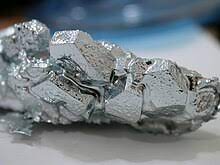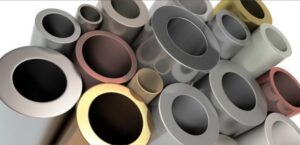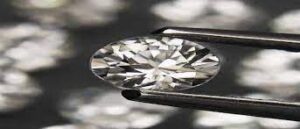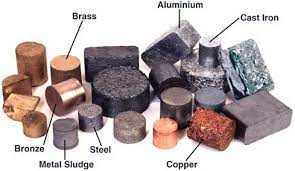Metals

The basic material from which jewelry is made in most cases is metal. Silver, Stainless Steel, Bronze, Copper and of course Gold are the main metals from which we can make jewelry that lasts and is friendly to human skin. In modern Greek we use the word silver, Silver is a white, shiny soft metal and has the greatest electrical conductivity of any known metal. It is found alone (native silver) or in alloys with gold, copper, lead or zinc Since ancient times it has been considered a precious metal along with gold, due to its luster, workability and rarity

Stainless steel
The history of stainless steel begins at the beginning of the 20th century, in the effort to create metal alloys resistant to extreme conditions, stress and corrosion. Today, we know stainless steel from its applications in medicine for the manufacture of high-quality surgical tools. in the manufacture of components with high resistance specifications in extreme conditions.
The creation of jewelry had to wait until 1980, when the first lines of jewelry were created that quickly became popular due to their dynamic image, and of course their exceptional durability and properties. Stainless steel is now compared to gold, for its resistance to time and its hypoallergenic properties; a series of non-magnetic stainless steel alloys, which we use in jewelry, with codes SAE 316L SAE 304; it is extremely resistant to moisture, corrosion, oxidation, with essentially zero risk of allergies. The quality of the material, combined with the innovative design and of course the affordable price, open new roads in the art of jewelry with a huge variety of options
If you are looking for a high-quality and aesthetic piece of jewelry that remains intact over time without spending a lot of money, stainless steel jewelry can be a great choice for you and the people you love. You can see many of them in our online store http://kosmimatomania.gr

Zircon
Zirconium, sometimes also called zirconite, is an isosilicate mineral of the homonymous metal. Like the metal, it owes its name to the Persian word zirgun = golden color. It forms transition phases, mainly with rare earth metals
With the addition of a stabilizer, zirconium crystallizes in the cubic crystal system, with greater strength, refraction and luster. The process of forming cubic crystals requires temperatures of +3000 degrees, up to 4000 degrees C, producing crystals of exceptional strength and great hardness

Cubic zirconia and synthetic moissanite are the stones that replace diamond with exceptional fidelity in jewelry making. The lower cost, the stone's resistance to fire and its hardness, combined with its transparency, luster and refraction revolutionized jewelry making and found application in the manufacture of high-definition lenses, filter prisms and laser accessories. The idea of producing a single-crystal cubic zirconium arose from the need to replace the expensive and hard-to-find diamond in laser technology, but also in optical applications of high demands and clarity.
In recent years, manufacturers have vacuum coated zirconia with a film of amorphous carbon for even greater shine and protection against stress.
Today it is estimated that the 15% of stones in jewelry production, is cubic zirconia Plating
Plating is the surface coating of an object with a thin layer of metal 0.5-2.5 micron thick. (1 micron is one thousandth of a millimeter) In jewelry, the most common platings are gold plating, silver plating, platinum plating, perodination and others
The classic plating process is based on Galvanization, the process of electrolytic transfer of positive metal ions to the object to be coated. This is done to protect the object from wear, to improve its appearance, or to create a new aesthetic effect. Modern plating uses technology in a dynamic way. IVD and PVD plating uses nanotechnology in a Vacuum environment Plating types for silver jewelry
 The electrochemical deposition of gold of a thickness of at least 0.5 micron on a metal object. The Italian chemist, in 1805, was the first to gild a small silver surface, but the first professional gilding and silvering workshops started at the end of the 19th century. Pure gold gives protection from oxidation, its shine, but above all a different aesthetic effect, a beautiful color of golden luxury. Pink The gilding with 14 carat gold, i.e. gold alloy with pure copper. Copper gives gold a strong rose tint, a particularly popular contemporary color in jewelry. Redemption. The deposition of silver on the jewelry or object, to give the object a silver look and shine. One of the oldest methods of plating jewelry, it is slowly being withdrawn due to the dynamic entry of eroding into the market. Plating of stainless steel jewelry The end result is a piece of jewelry that is very resistant to corrosion, oxidation and impacts. PVD technology is 6-8 times more durable than classic plating.
The electrochemical deposition of gold of a thickness of at least 0.5 micron on a metal object. The Italian chemist, in 1805, was the first to gild a small silver surface, but the first professional gilding and silvering workshops started at the end of the 19th century. Pure gold gives protection from oxidation, its shine, but above all a different aesthetic effect, a beautiful color of golden luxury. Pink The gilding with 14 carat gold, i.e. gold alloy with pure copper. Copper gives gold a strong rose tint, a particularly popular contemporary color in jewelry. Redemption. The deposition of silver on the jewelry or object, to give the object a silver look and shine. One of the oldest methods of plating jewelry, it is slowly being withdrawn due to the dynamic entry of eroding into the market. Plating of stainless steel jewelry The end result is a piece of jewelry that is very resistant to corrosion, oxidation and impacts. PVD technology is 6-8 times more durable than classic plating.
The method does not produce heavy metal residues or contaminated waste, overall it is much more friendly to the environment, but also to the human body.
http://kosmimatomania.gr

 BestPrice.gr
BestPrice.gr
BestPrice.gr
BestPrice.gr